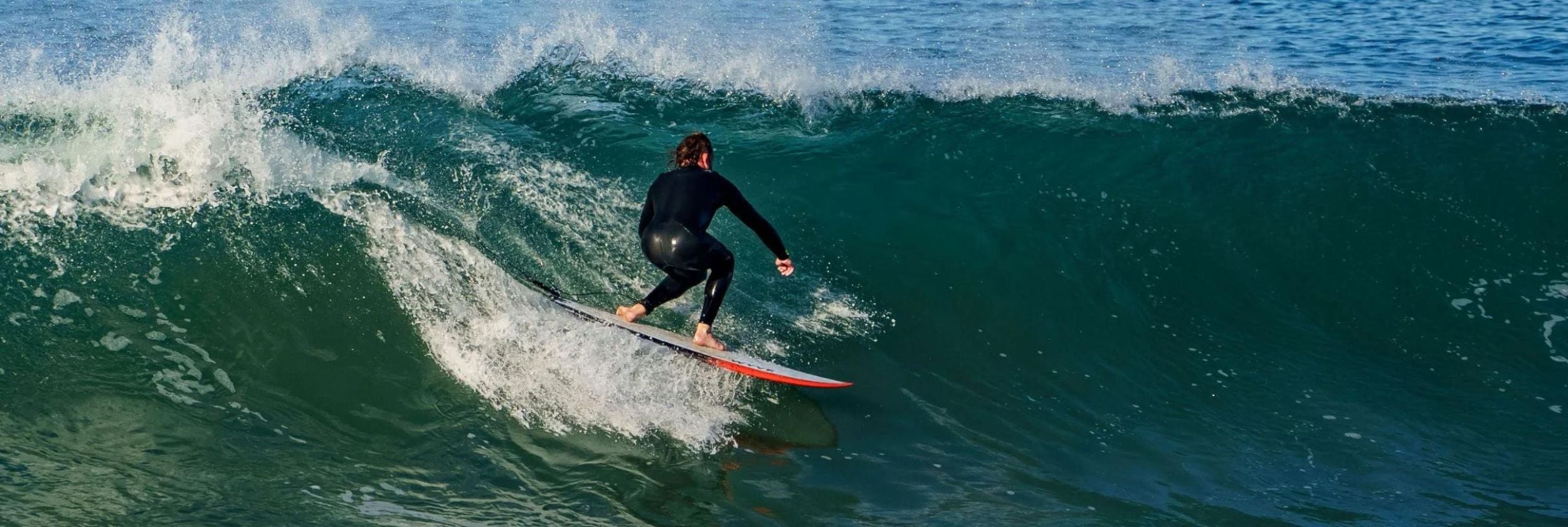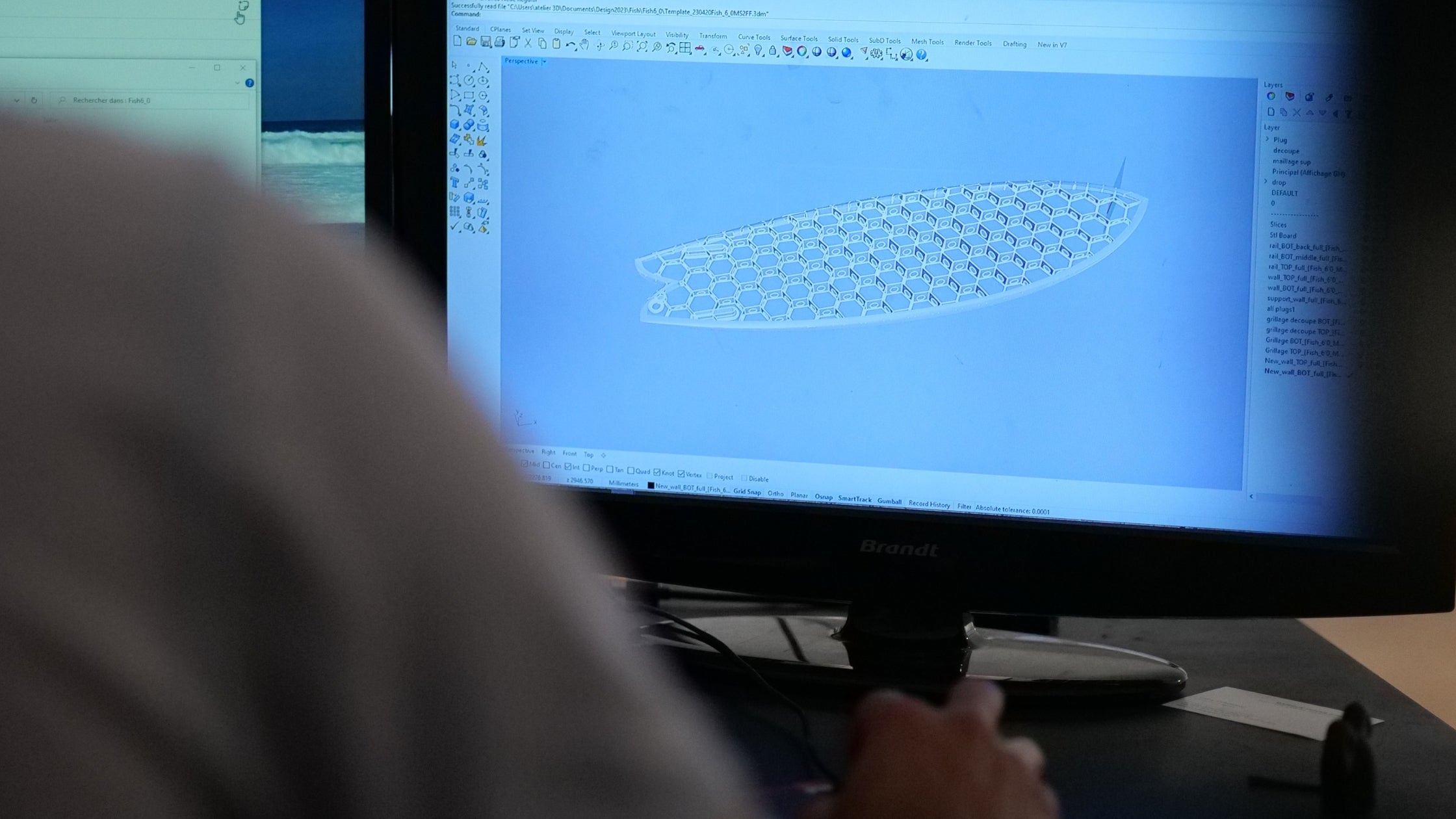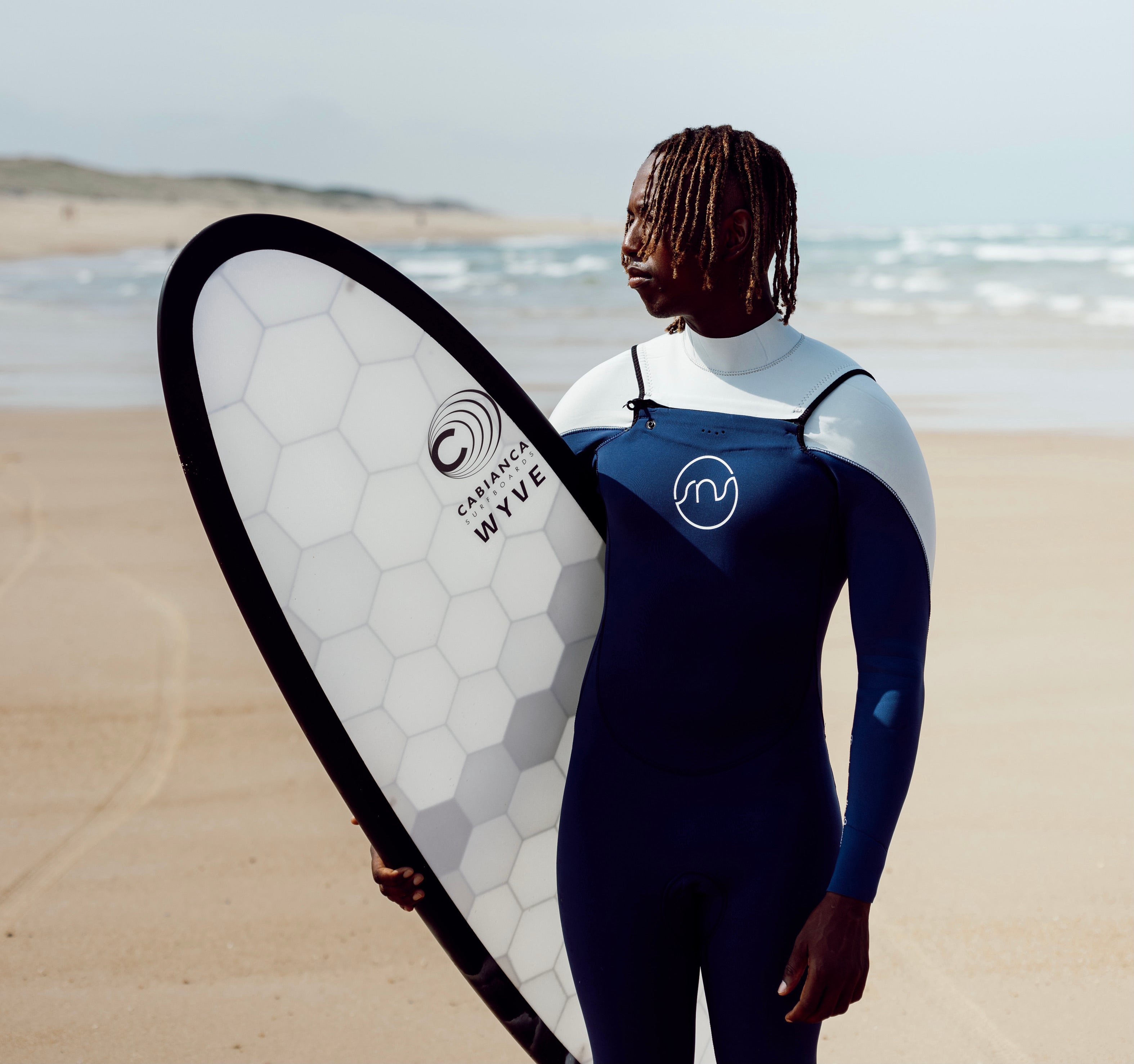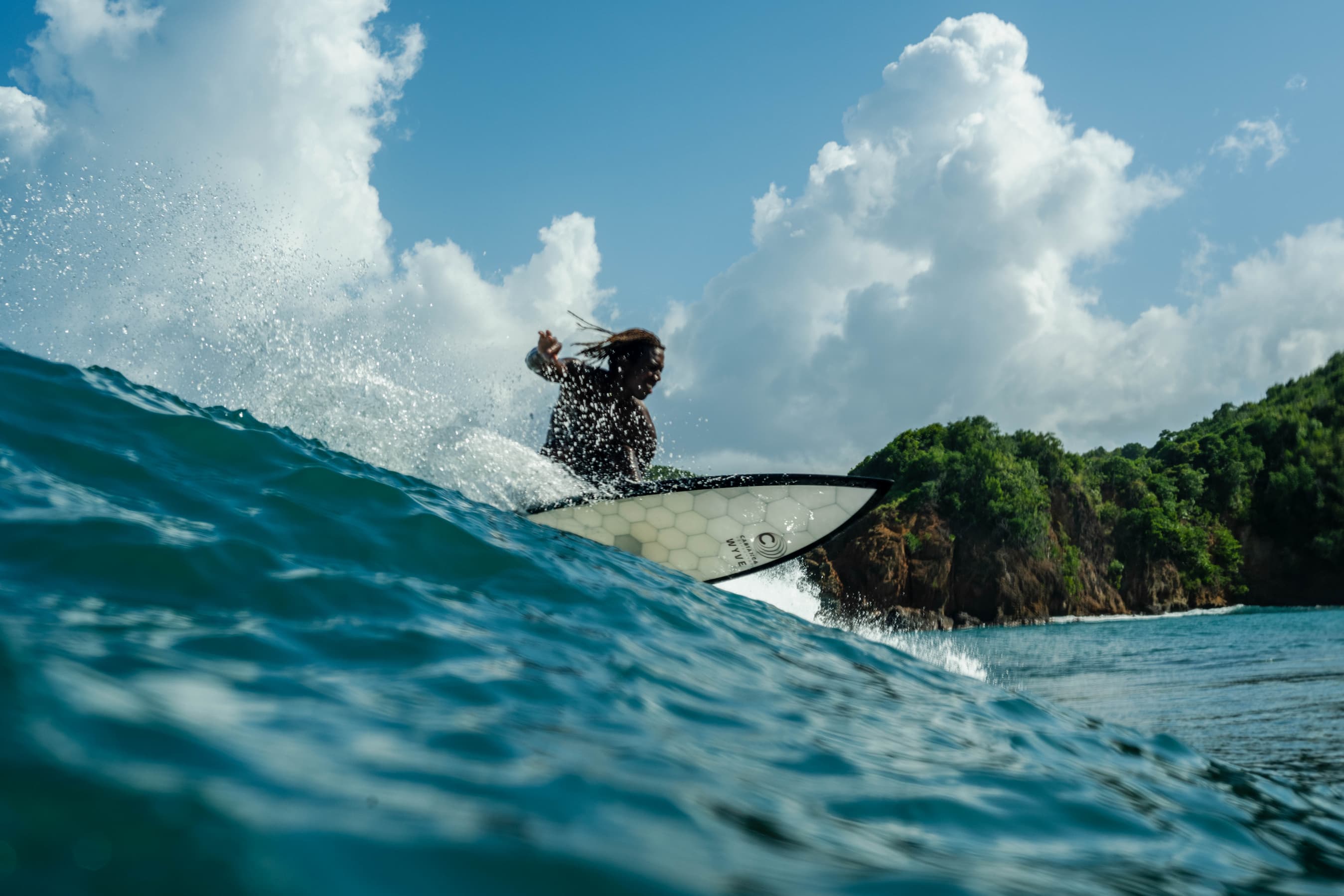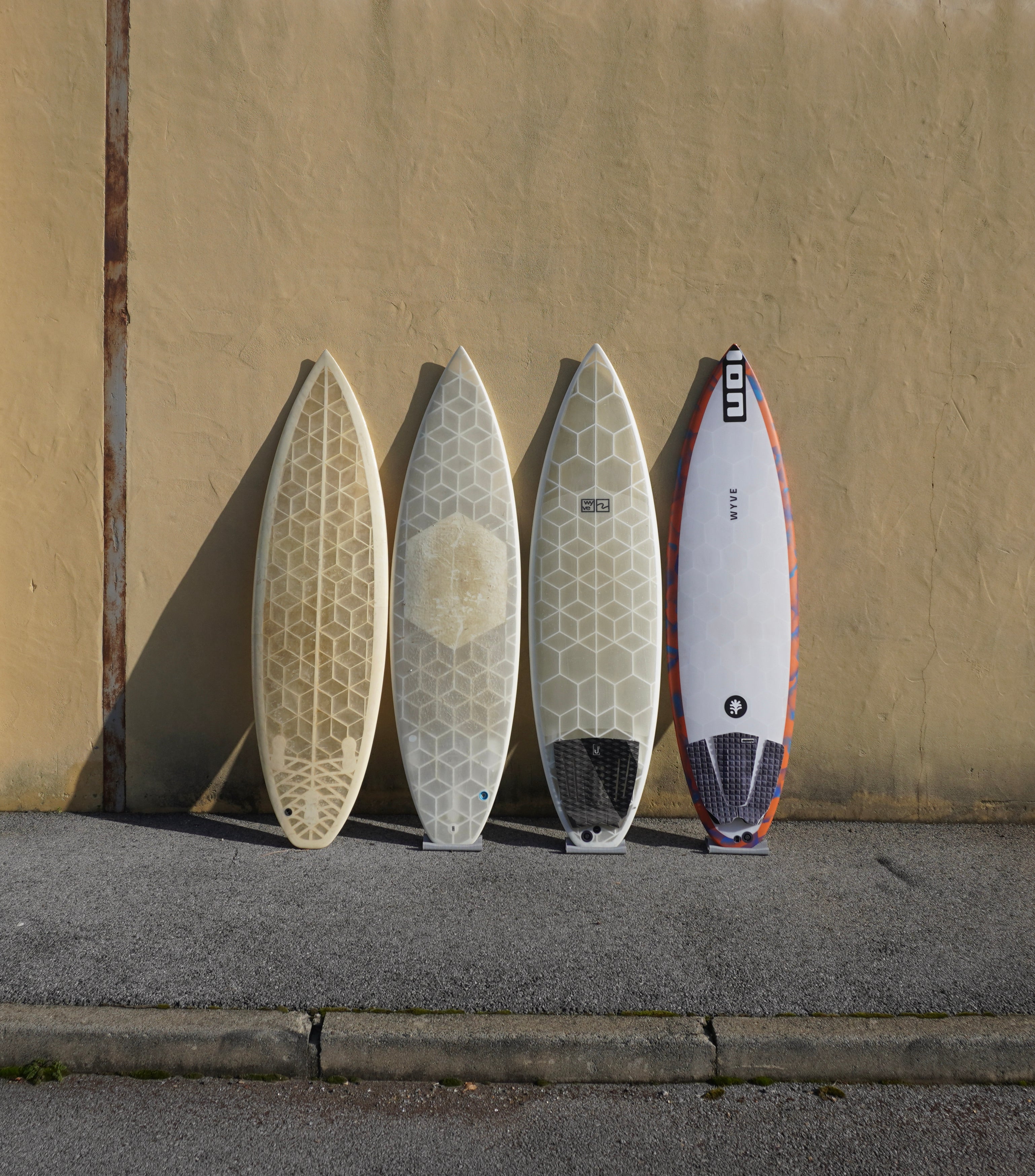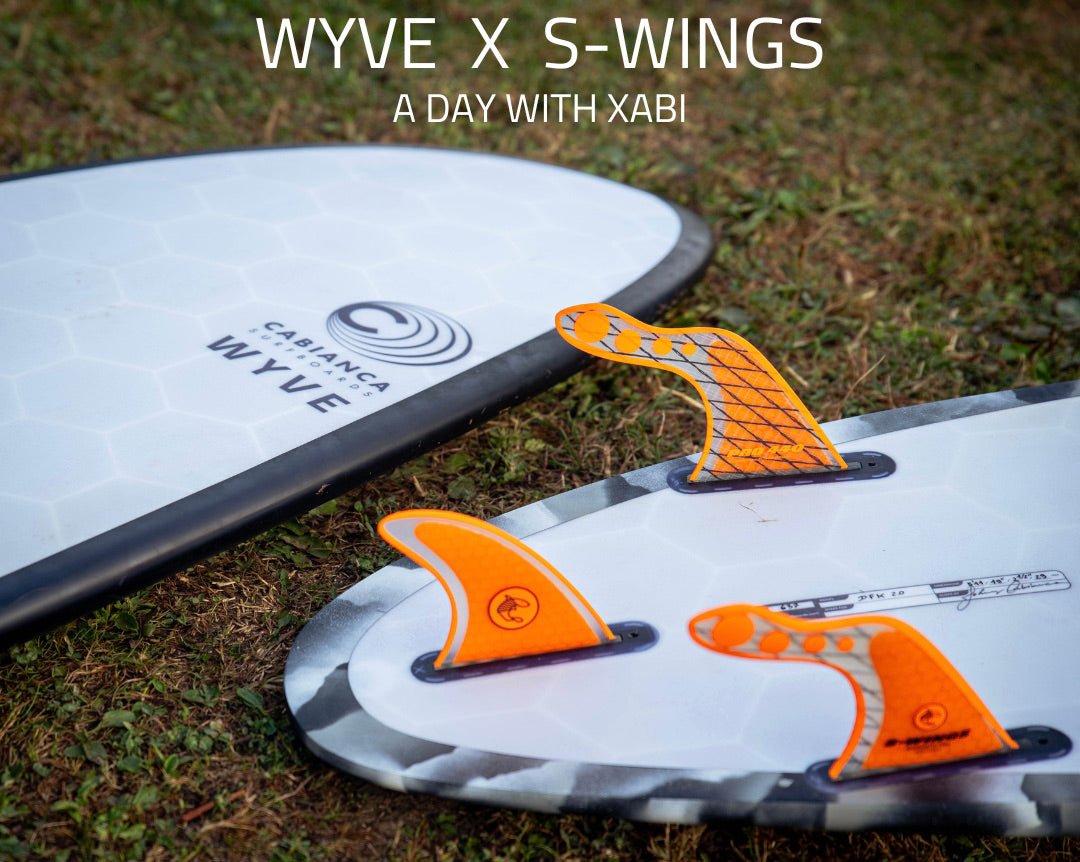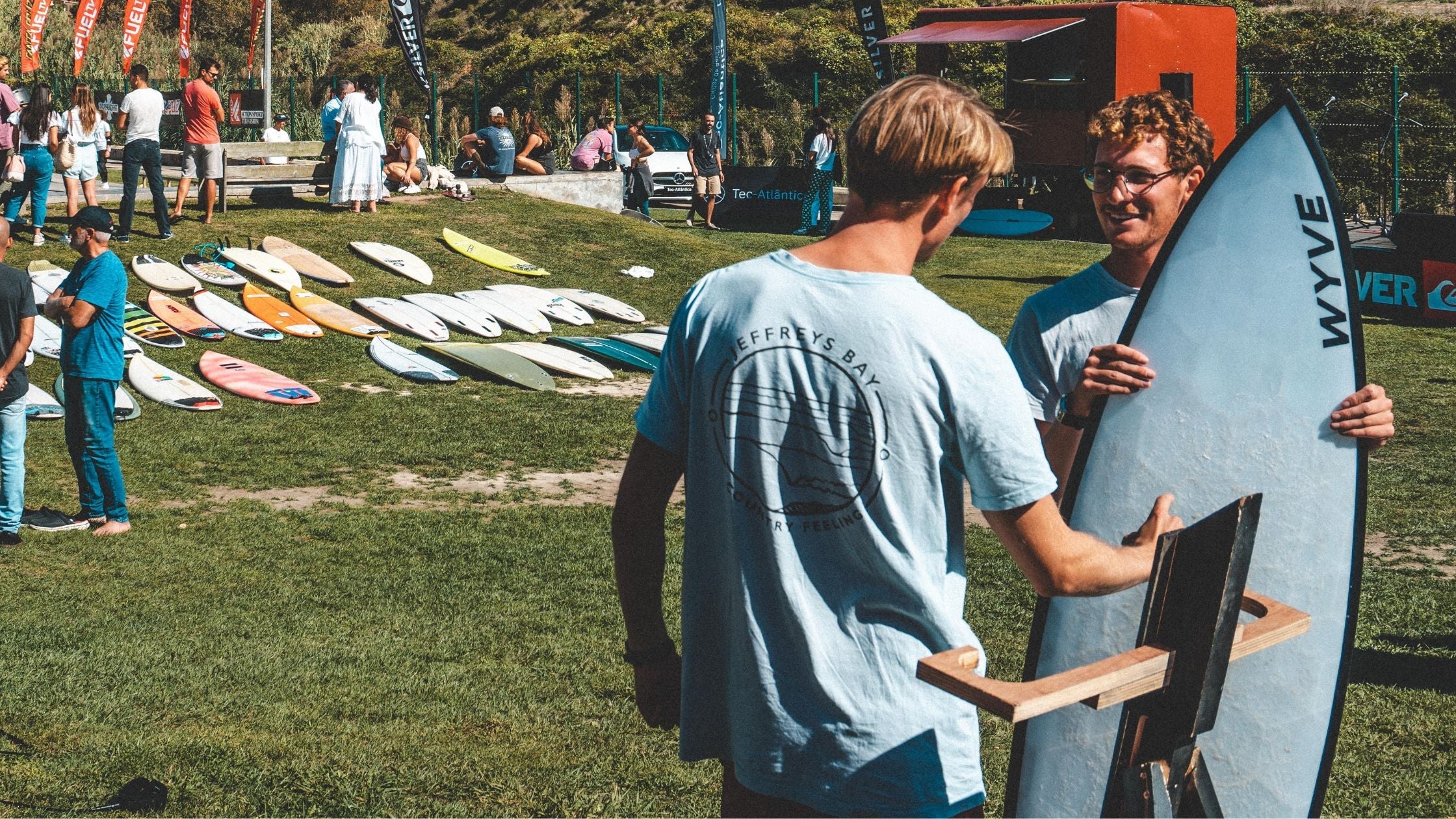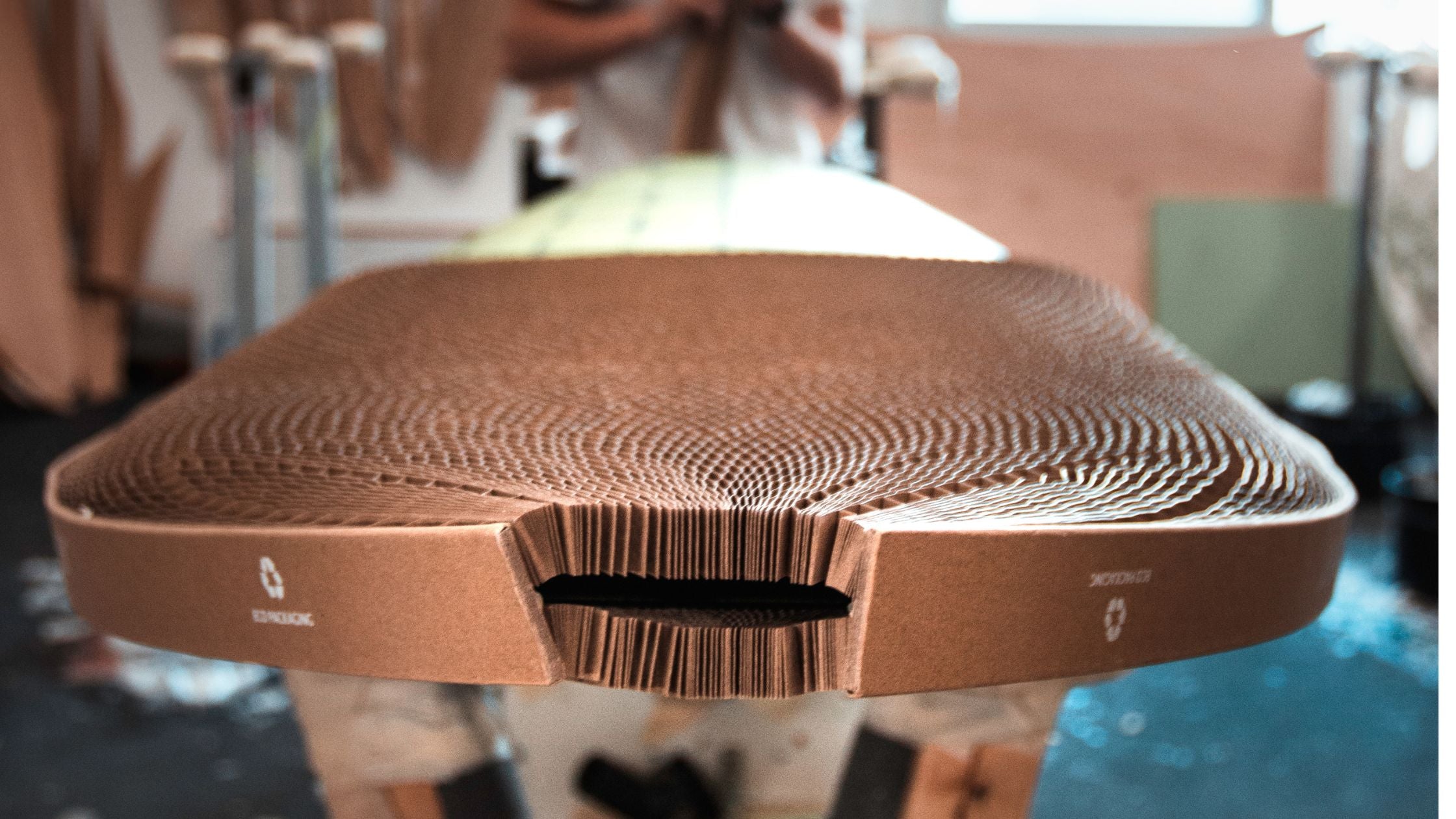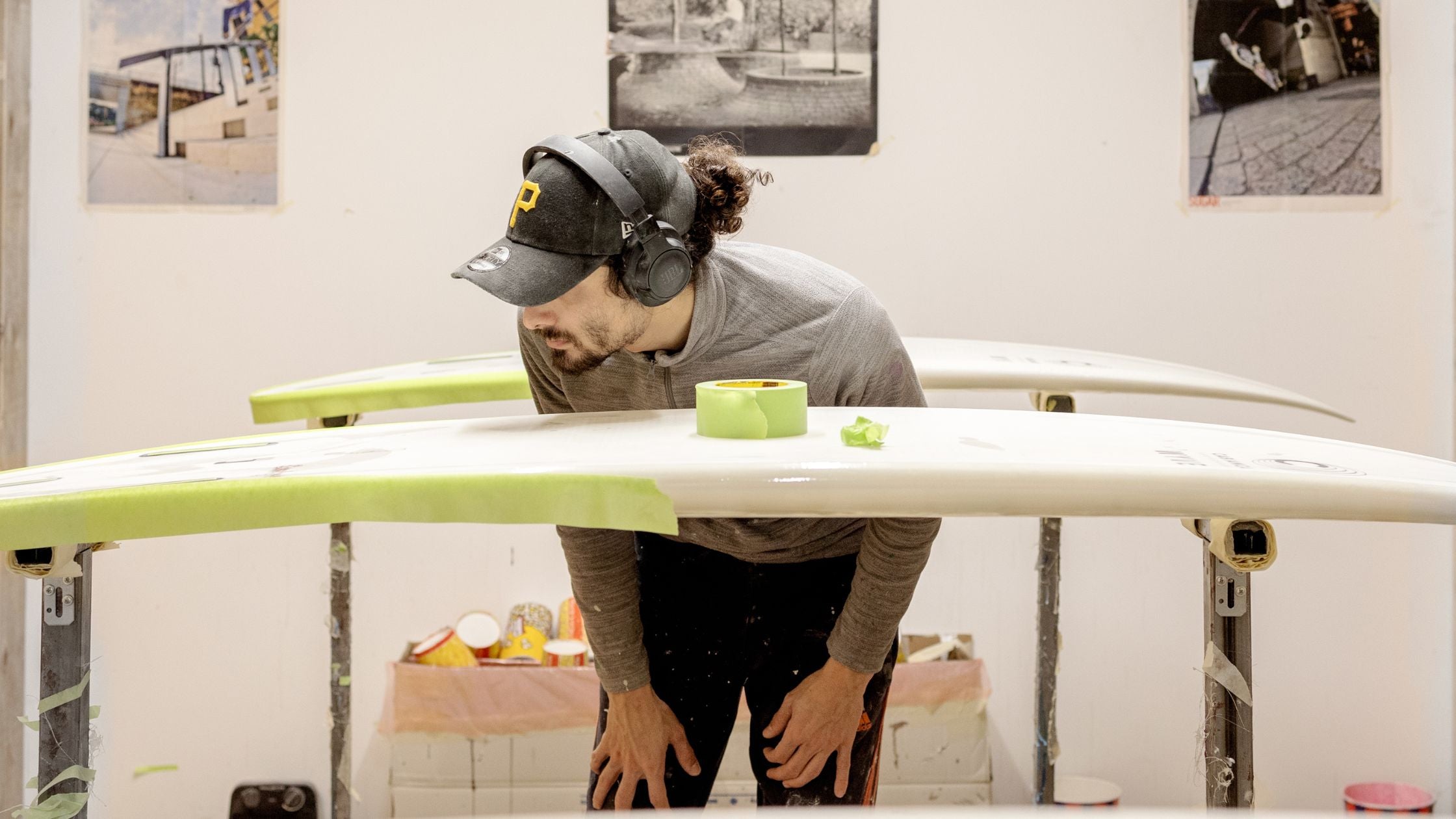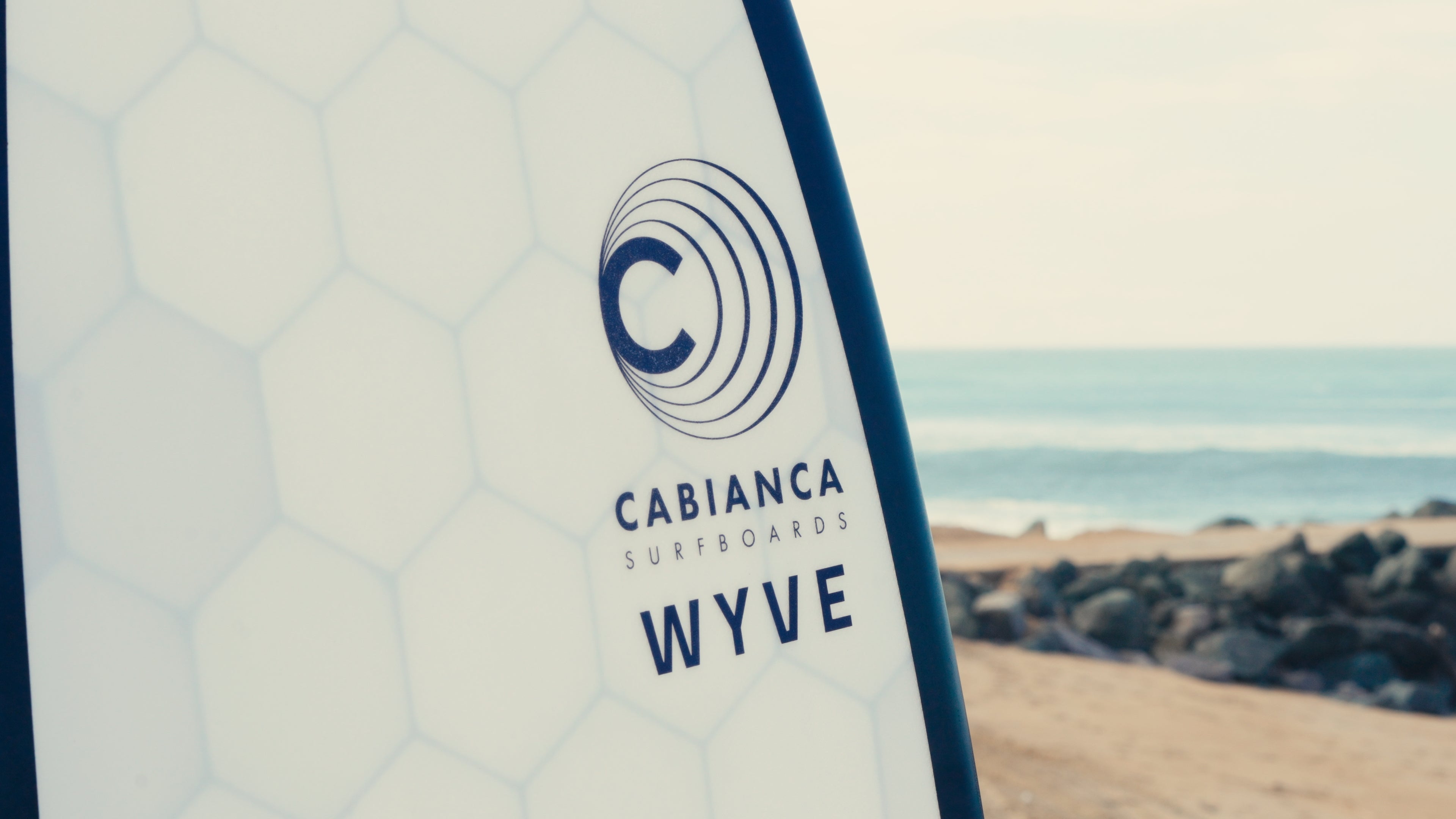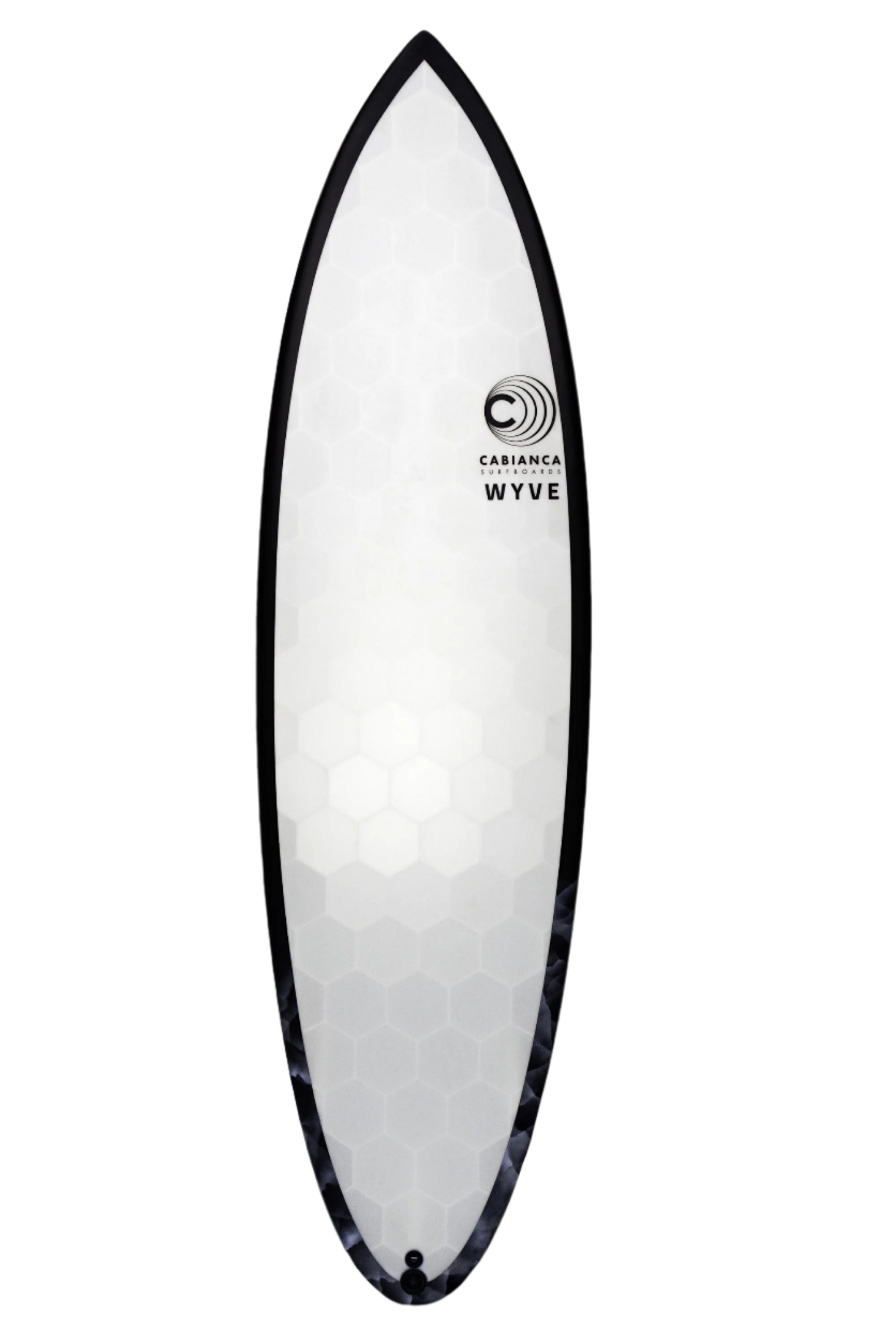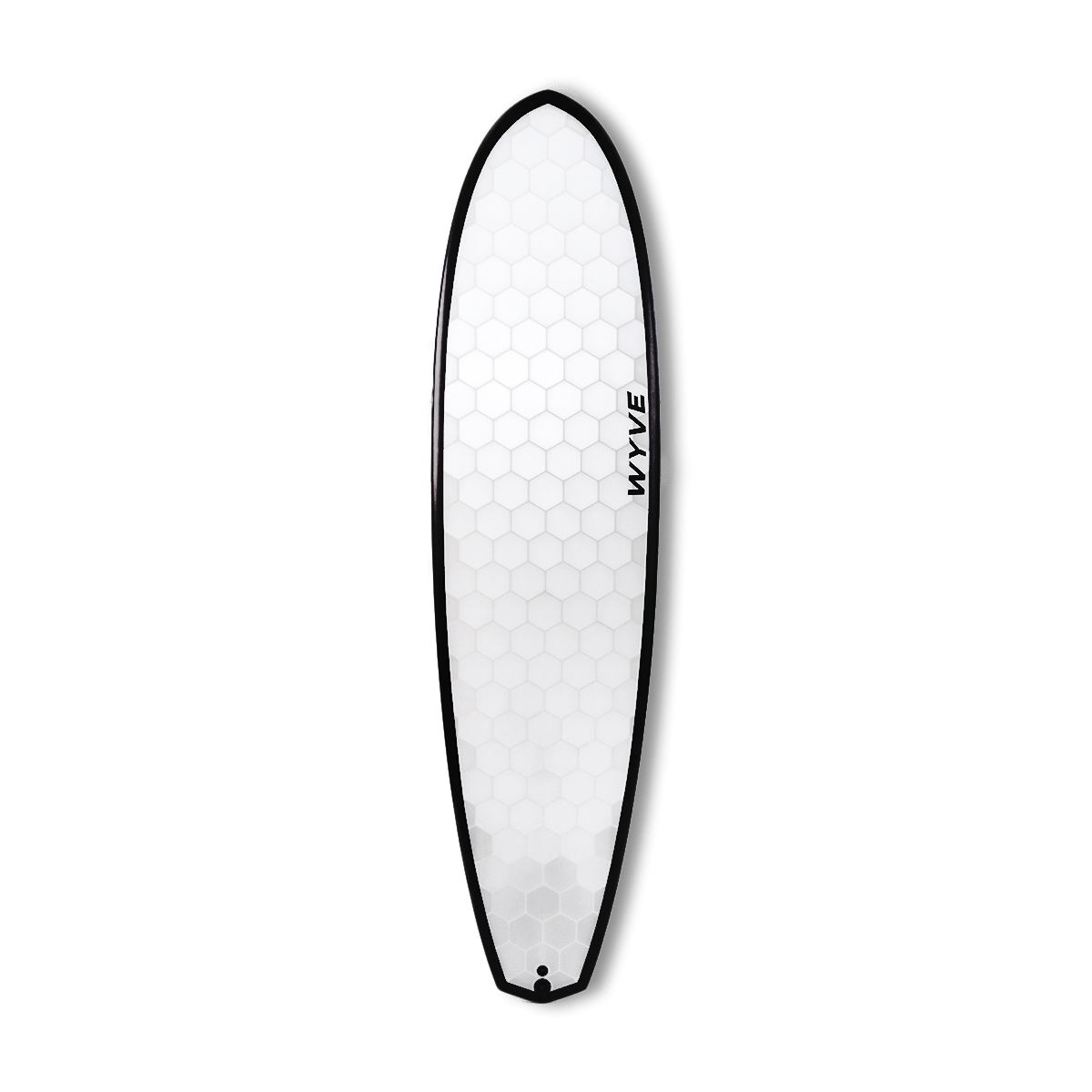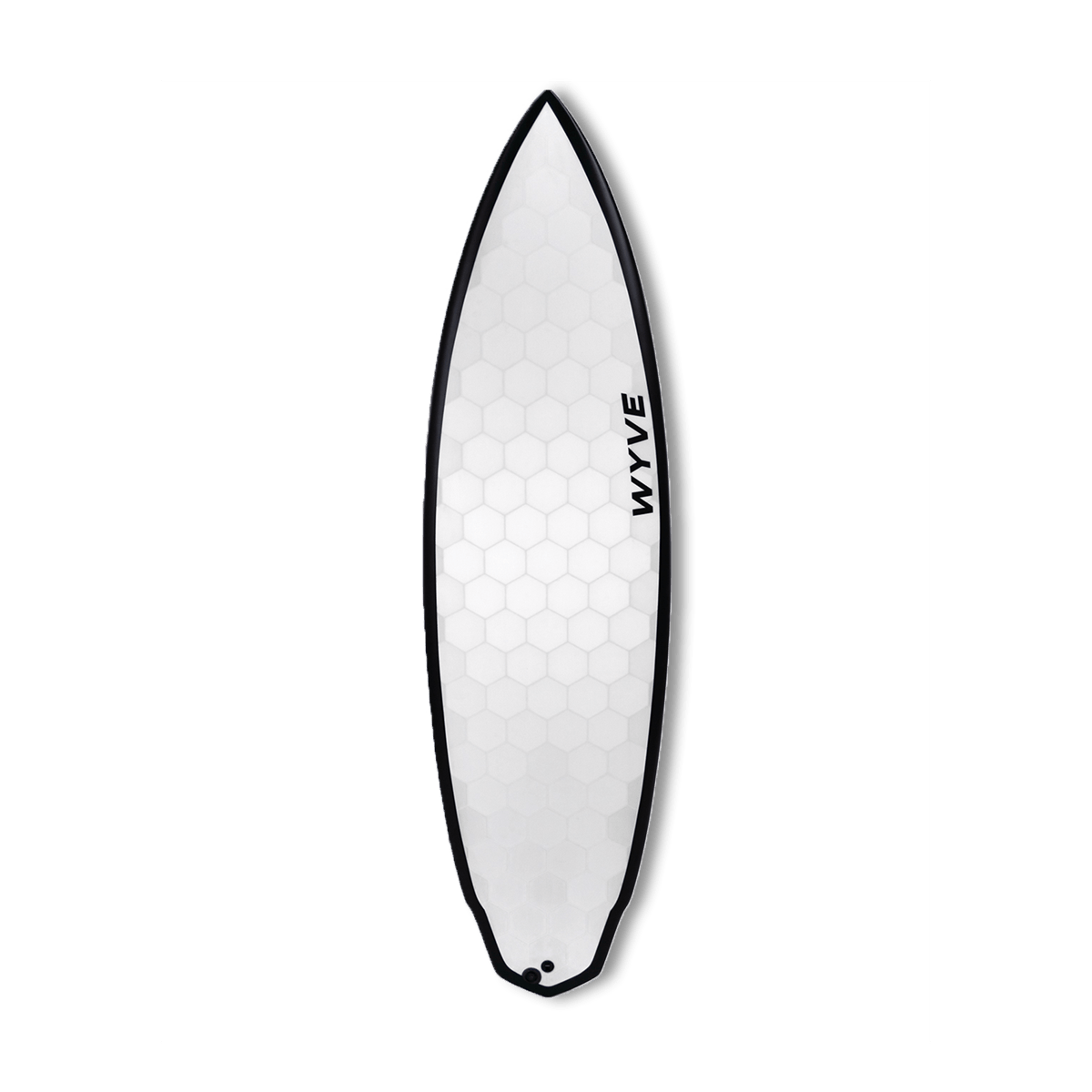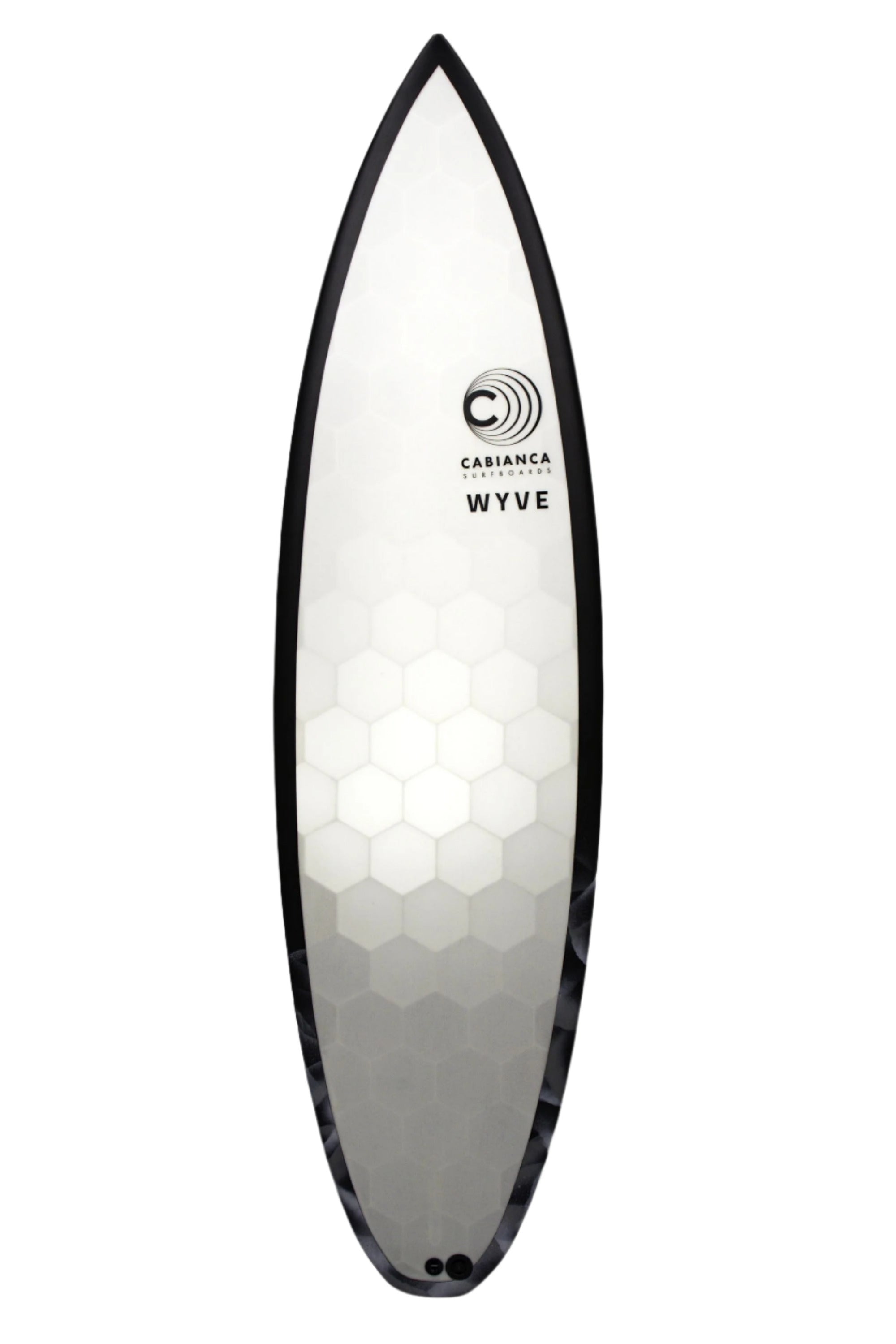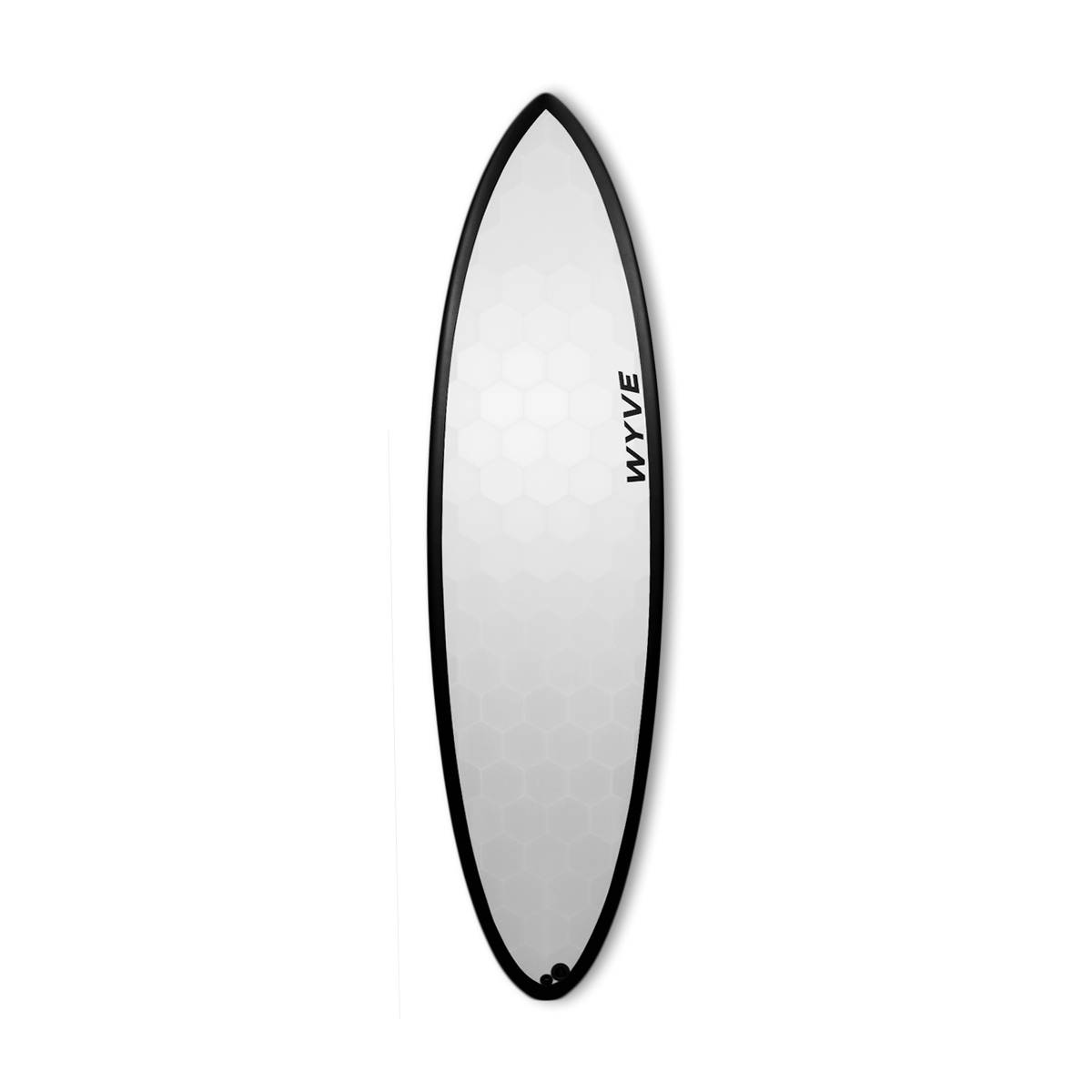How to find the perfect volume?
Surfboard volume calculators promise a tantalizing quick fix for finding your perfect magic surfboard. Simply plug in your height, weight and ability level, and voila! The algorithm gods beam down precise volume recommendations.
But reducing your dynamic style potential to just three data points? That seems downright criminal. This complex journey transcends the binary confines of digits and formulas.
Choosing a surfboard is about understanding the maneuvers you crave, the waves that call to you, and discovering the equipment that channels your aquatic aspirations.

Keys Takeaways :
While volume calculators provide a starting point, they fail to account for key variables such as :
-
Surfboard volume alone doesn't account for the nuanced interplay of factors like body weight, fitness level, and wave characteristics, including weak waves.
-
The ideal board volume isn't static; it adapts to individual needs like wetsuit thickness, water temperature, and even age.
-
Before acquiring your next board, it's crucial to consider not only its volume, but also its overall shape and design.
-
Simple metrics like length, thickness, and width offer limited insight. focus on the board's shape, rocker profile, and fin configuration, as these elements significantly influence performance and complement your unique surfing style.
-
The pursuit of a "perfect" volume is ultimately a futile endeavor. While increased volume can offer greater buoyancy and stability in weaker waves, it is not a substitute for refined technique and skillful surfing.
-
Regardless of your experience level, prioritize board design that aligns with your individual needs and preferences to maximize your potential on the waves.
Beyond the Buzzword: The Pitfalls of Volume Calculators
Volume calculators and volume chart, those alluring sirens of the data, promise precision recommendations based on your height, weight, and assumed ability level. But beware, their siren song can lead you astray.
Hyper-focusing on volume alone severely restricts progression, binding you to misaligned boards that stifle your potential. They're like blind dates for your surfing journey, potentially leaving you with a board that's all wrong for your style and goals.
These one-dimensional formulas ignore the nuances that truly define your perfect board. The types of waves you ride, the maneuvers you dream of, the technique you want to refine – these are the whispers your soul yearns to express.
Do you seek the exhilaration of aerial assaults or the soulful communion of a perfectly timed trim? Don't let calculators drown out that inner symphony.
Tuning Your Surfing DNA: Style, Goals, and Responsiveness
Instead of blindly following algorithms, listen to your inner surf maestro. Define the types of waves you seek, the maneuvers you long to master, and the skills you want to hone. Are you a barrel-chaser, a carving fiend, or a smooth-gliding soul surfer? Knowing your surfing DNA is the first step to building your perfect quiver.
Once your fundamentals are solid, ditch the stability crutch and embrace responsiveness. Seek boards that dance with your every move, not clunky planks that stifle your progression. Loose, responsive outlines amplify possibilities like never before, pushing you beyond comfort zones and into the realm of true surfing artistry.
A Shortcut to Mismatched Surfboards
-
They emphasize overly simple ability spectrums spanning beginner to advanced, incapable of capturing nuanced skill variances, maneuver interests and surfing affinities so critical in board alignments.
-
No accepted precise formula or industry consensus exists around volume-to-weight ratios, with recommendations ranging wildly from 2:1 up to 4:1 liters per kilogram or more.
-
They discount critical factors like wave types, temperaments, progression goals and style focuses when defining optimal magic carpets.
Unleashing Your Potential
Rather than fixing on historical assumptions in an endless quest to "solve" ideals through digitizing fluid dynamics, embracing preferences, responsiveness, and collaborations provide the way forward.
-
Assess Style & Goals - Beyond volume, defining the types of waves, preferred maneuvers and abilities sought allows more thoughtful equipment alignments.
-
Pursue Responsiveness - Once fundamentals cemented through quality practice, seek out boards offering increased looseness enabling new capabilities over accommodating flaws.
-
Leverage Experts - Trusted shapers translate ephemeral feelings into responsive magic carpets through years of design refinements attuning to local conditions and skill level nuances.
Why Responsiveness Matters: A Pathway to Progression
For some, high-volume boards might seem like the ultimate comfort zone, a crutch for wobbly ankles and inconsistent waves. But true progression lies not in foam, but in responsiveness. A board that encourages rail engagement, pivotal momentum, and positive reinforcement of proper technique is your fastest ticket to surfing mastery.
Think of every turn, every carve, as a mini-lesson. A responsive board provides immediate feedback, guiding you towards proper weight distribution, precise rail engagement, and smooth transitions. It's like having a personal surf coach under your feet, constantly pushing you to refine your technique and unlock your next level.
Sure, excess volume might offer temporary comfort, but it also masks flaws and hinders your growth. Embrace responsiveness instead, and you'll prepare yourself for the inevitable next step boards, not just the next wave.

Surfboard Volume Calculators: A Handy Guide, Not a Magic Formula
Surfboard volume has become a popular buzzword, but don't get swept away by the tide of one-size-fits-all recommendations from calculators. While they offer a starting point, it's crucial to understand their limitations and consider other factors for the perfect ride.
Here's the lowdown on surfboard volume calculators:
The Good: ✅
-
Simple to use: Input your weight and skill level, and voila, you get a volume recommendation.
-
Based on data: Years of experience from shapers and surfers feed these algorithms, making them generally accurate for standard polyurethane shortboards.
-
Starting point: They provide a helpful initial guess for your board's ideal volume.
The Not-So-Good: ❌
-
One-dimensional: They ignore crucial factors like board construction, wave conditions, and your unique riding style.
-
Not gospel: Epoxy and EPS boards are more buoyant, requiring lower volume. High-performance shapes need even less.
-
Limited scope: They primarily address shortboards and funboards, neglecting longboards and stand-up paddleboards.
Beyond the Calculator 👇:
-
Shaper's wisdom: Consult a local shaper. They understand your local waves and can fine-tune the calculator's recommendations based on your specific needs.
-
Board construction: Consider the material. Epoxy or EPS boards need less volume than their polyurethane counterparts.
-
Wave types: Smaller waves need more volume for paddling, while bigger waves allow for lower volume boards.
-
Riding style: Are you a powerful carver or a smooth glider? Your style influences the ideal volume.
Remember 🧐:
-
Volume is just one piece of the puzzle. Board design, rocker, fin setup, and even your wetsuit thickness all play a role.
-
Experimentation is key. Don't be afraid to try different boards to find what feels best for you.
-
Trust your instincts. Ultimately, the board that resonates with you is the perfect one.
Surfboard volume calculators are a helpful tool, but they're not a crystal ball. Use them as a starting point, then dive deeper into the nuances of board design and your surfing preferences. With a little extra effort, you'll find the perfect wave-riding partner for your unique style.
High-performance shapes, hungry for smaller numbers, scoff at volume calculators altogether. They rely on their sleek outlines and meticulously crafted rockers to dance on the wave face, not just float above it.
Beyond the Calculator:
So ditch the data divining and embrace the art of board selection. Here's your roadmap to building a quiver that sings with your soul:
-
Consult the Shaper: They're your surfing guru, the translator of your dreams into tangible reality. Discuss your wave preferences, skill level, and desired riding style. Let their expertise guide you, but don't be afraid to express your vision. Remember, collaboration is key.
-
Embrace Responsiveness: Forget the comfort zone of excess volume. Opt for boards that react to your every move, pushing you to refine your technique and unlock new possibilities. Loose outlines and responsive rails become your dance partners, not your anchors.
-
Mind the Materials: Epoxy and EPS boards are lighter and more buoyant, requiring less volume than their heavier polyurethane counterparts. Consider your local conditions and riding style when making this choice.
-
Wave Types Matter: Small, punchy waves need more volume for paddling, while bigger swells allow for lower-volume boards that slice through the water like a hot knife.
-
Don't Forget the Fins: These are the orchestra conductors of your board, influencing everything from maneuverability to stability. Experiment with different fin setups to find the perfect harmony for your surfing style.
-
Trust Your Instincts: Ultimately, the board that resonates with you is the perfect one. Don't be afraid to step outside the calculator's box and try something new. Listen to your body, feel the board under your feet, and let your inner surf maestro guide you.
Surfboard volume calculators can be a helpful tool, but they're not the Holy Grail of board selection. They're like a tourist map in a foreign land – a good starting point, but not the only way to reach your destination.
By understanding your own desires, collaborating with shapers, and trusting your instincts, you'll unlock the true potential of your surfing journey. Remember, the perfect board isn't hiding in some algorithm; it's waiting to be unleashed within you. So grab your board, ride your wave, and leave the data divining behind. The ocean is calling, and your inner surf maestro is ready to answer.
Beyond the Numbers: Reclaiming Surfboard Joy with Wyve Shapers
In the data-driven world of surfboard selection, Wyve Shapers, Léo and Pau-Elie, offer a refreshing wave of personalized expertise and wave-catching joy. They transcend the tyranny of algorithms and trends, focusing instead on crafting boards that ignite your passion for the waves and maximize the pure pleasure of riding.
Reclaiming the Ride: Wyve Shapers believe the perfect board isn't just about technical specs; it's about unlocking your unique surfing soul. Forget chasing the "perfect" size based on social media trends or external pressures. Léo and Pau-Elie work with you to understand your needs, body type, and wave preferences, creating a board that feels like an extension of yourself on the water.
Collaboration, not Calculation: Trust the Wyve Shapers' expertise. They're not just data points in an algorithm; they're artists who translate your surfing dreams into tangible reality. Collaborate with them to explore options, ask questions, and express your desires. Their passion for shaping and their commitment to personal connection ensure a board that resonates with your unique soul on the water.
Embrace the Mid-Length Magic: Léo and Pau-Elie champions the versatility of mid-length boards, particularly for those starting out. These boards offer a sweet spot between performance and wave-catching, paddling effortlessly,catching waves with ease, and still allowing for playful maneuvers. Imagine the joy of effortlessly gliding, carving with confidence, and feeling the thrill of catching a wave on a board that feels like an extension of your soul.
Beyond Volume: While volume plays a role, Wyve Shapers don't get hung up on the numbers alone. They understand the overall design, including width, rocker, and fin configuration, all contribute to how your board will feel and perform. They'll guide you to explore options that resonate with your surfing style and maximize your wave-catching joy.
Customization with Caution: While tweaking dimensions can be tempting, Léo and Pau-Elie emphasize the importance of respecting their vision. They've carefully crafted each board for a specific purpose. Trust their expertise and collaborate to find the ideal board that unlocks your personal surfing potential.
Ultimately, Wyve Shapers believe the perfect board is the one that unlocks your joy on the water. It's the one that makes you paddle out with a smile and return with sore arms and a heart full of stoke. So ditch the data deluge, embrace the collaboration, and reclaim the joy of surfing on your own terms, with a board crafted by Wyve Shapers, Léo and Pau-Elie.

Our Additional reading about Surf Volume
Resources:
-
Firewire Surfboards Volume Calculator: https://www.firewiresurfboards.com/pages/surfboard-volume-calculator
-
Pyzel Surfboards Volume Calculator: https://www.pyzelsurfboards.com/?page=volume-calculator
-
Rusty Surfboards Volume Calculator: https://rusty.com.au/blogs/all/volume-calculator
-
Lost Surfboards Volume Calculator: https://lostsurfboards.net/surfboard-volume-calculator/
Additional tips:
-
When using a surfboard volume calculator, be sure to enter your information accurately.
-
Don't be afraid to ask the shaper for recommendations based on your specific needs.
-
Take your time and find a board that you feel comfortable and confident on.
Frequently Asked Questions about Surfboard Selection: Beyond Volume Calculators
1. How does my age affect my surfboard volume?
While age isn't a direct indicator of volume, it often correlates with physical factors like strength and agility. Younger surfers may benefit from slightly higher volume for paddling ease, while older surfers may prefer a more responsive board. Ultimately, consider your personal fitness level and wave preferences alongside your age.
2. How does my body weight impact board volume?
Heavier individuals generally need more volume for buoyancy and stability. However, don't rely solely on weight-to-volume charts. Consider factors like fitness level, preferred wave size, and riding style to fine-tune your volume needs.
3. How does my fitness level influence surfboard volume?
Stronger surfers can handle lower volumes, allowing for increased maneuverability and responsiveness. If you're new or returning to surfing, consider a higher volume board for stability and confidence-building.
4. Does water temperature affect my surfboard volume?
Surfing in cold water often requires a thicker wetsuit, which can displace water and effectively increase your volume. Consider a slightly lower volume board to compensate for the wetsuit's buoyancy. Warmer waters may allow for a slightly higher volume board due to reduced wetsuit thickness.
5. Does my wetsuit thickness impact board volume?
Yes, a thicker wetsuit displaces more water, effectively increasing your volume. Choose a board volume that accounts for your intended wetsuit thickness to avoid feeling sluggish or unstable on the water.
Remember, the "perfect" volume doesn't exist. It's about finding a board that works best for you and your unique surfing journey.



